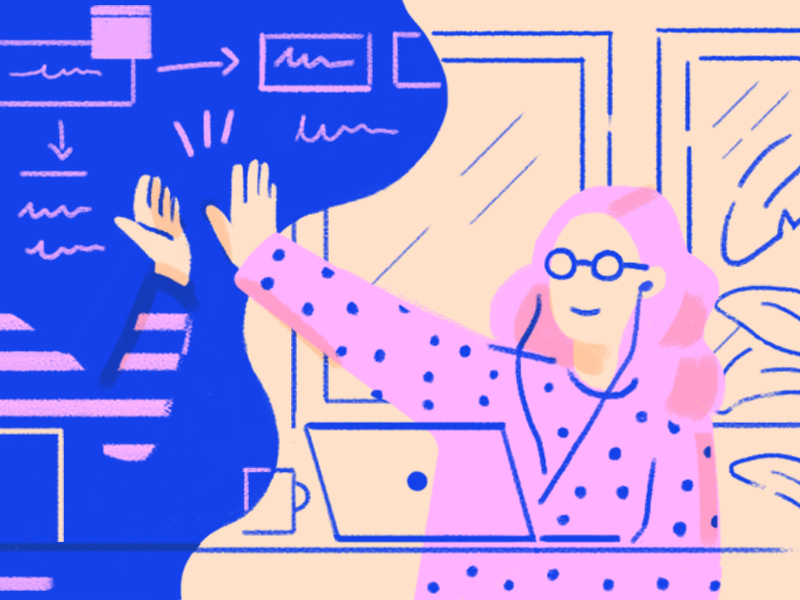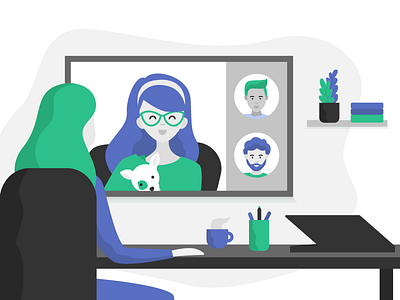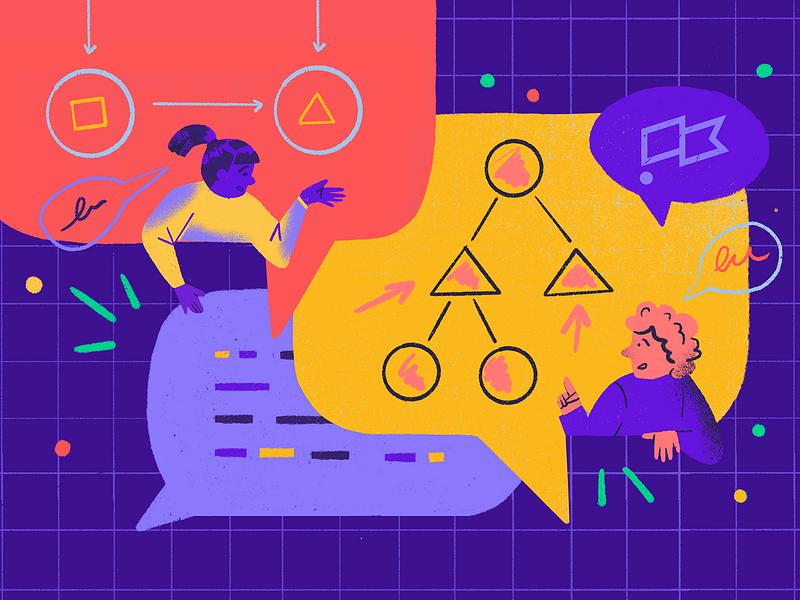It’s no secret that the remote workforce is exploding, and the design industry is quickly following suit by embracing remote workers and freelancers. Technology is rapidly leveling the playing field for designers around the globe, making the ability to virtually collaborate with a design team easier than ever through a number of tools and apps.
As companies and hiring managers start to embrace and seek out full-time and part-time remote designers, competition is becoming fierce and it can be daunting to apply for these roles—especially if you’ve never had the opportunity to work a remote job. So with that in mind, I’m excited to share some of Dribbble’s best tips for landing a remote product designer job!
1. Create a portfolio that stands out
If you want to stand out amidst hundreds of other applications and portfolios, a surefire way to get noticed is for a hiring manager to be able to see your high-quality work quickly and painlessly.
When creating your portfolio, think in terms of simplicity, accessibility, and availability. You want the hiring manager, who is likely looking at a myriad of other applications, to be able to see your best work and get an overview efficiently. If they have to hunt and wait for it to load, chances are you won’t be getting a call for an interview. Case studies are excellent for showing off more details around your work, and they make it easy for employers to get a feel for your skill set and personality. Just make sure you prioritize highlighting your best work and making it readily available at the top of your portfolio.
You should also set up your portfolio so it’s relevant and applicable for the job you’re applying for. In other words, if you’re applying for a new job in product design, showcase your product design work first, rather than all your illustrations. Feel free to have different portfolios for different types of work, so someone reviewing your application can choose what to look at first!
2. Craft your cover letter
While your portfolio is a key part of your application, don’t neglect your cover letter! Remote hiring teams lean heavily on cover letters to screen applicants for key remote work skills: stellar communication, the ability to navigate the nuances of remote collaboration, excellent time management skills, and culture alignment.
It’s crucial that your cover letter is personalized and customized to the role. This is your opportunity to sell yourself, and doing so effectively will make the difference between getting called for an interview or not. So seize the opportunity, and tell me why you’re qualified for the position. The best way to do this is to look at the requirements listed in the remote job description, and highlight elements of your experience that directly lend themselves to these things. You’ll also want to succinctly detail your career trajectory, and place emphasis on transferable, or “soft” skills that you have or that you’re actively learning so that your potential remote employer can see how you might apply them to the role.
Finally, tell me why you’re excited about the remote position, and what makes you a good fit. Are you already an evangelist for their product? Do you use it frequently? Do you have a deep passion for this line of work? If it’s always been your dream to work here, tell me why. If the only thing I can see you’re excited about is the ability to work from home or a coffee shop, we’re likely not going to be moving your application any further.
3. Prepare for a remote interview
If your interview is via a video call, ensure you’ve got a solid internet connection, and a quiet, distraction-free location to take it from. Turn off any additional apps and notifications (like Slack) so you can avoid being interrupted, and ensure you’ve got a plain backdrop behind you. Seeing your bed with a pile of laundry on it is not going to convey a very professional impression!
Some of the most important skills to highlight when interviewing for a remote design position include your communication skills, and your ability to manage your time effectively. Come prepared with examples of how you like to set up your schedule or manage your tasks, how you work with product managers and fellow designers, how you communicate with stakeholders, etc. Share what your ideal remote work environment looks like! If you have a dedicated space, ideal time zones to work in, or a specific routine that you find makes you particularly productive, share that with your interviewer. It’ll convey that you’re committed to creating an atmosphere where you’ll be able to be productive in a remote environment.
Additionally, preparing questions to ask before an interview ensures you won’t be scrambling to come up with something on the spot, and it demonstrates that you care enough about the opportunity to have done your research. Interviewing goes both ways—the employer is evaluating whether there’s a mutual fit, and it’s your opportunity to do the same.
Some of the best questions a designer can ask in an interview include:
- What design tools do you use?
- What’s the process like for a project?
- How will I be able to contribute to the design team?
- How do you design for accessibility?
- Where do you see the product development/company/team going in the next 1/3/5 years?
- Where do you see me in five years at the company? What opportunities are there for growth?
- (If you’re interested in a leadership role)What are the options for me in terms of moving into a leadership position?
4. Get ready for a design exercise
Often times, a design exercise or challenge will follow a preliminary interview—this is especially true for product designers and user experience designers applying for a remote design job. It’s imperative that you show up prepared for your design exercise. Take time to read over the brief or instructions, put your thoughts down on paper, and send them over to the hiring manager before your call to give them a chance to review it. Design exercises are generally not about what work is generated, but rather how work is generated; the goal of the exercise is to see what it’s like to work with you on a project. Don’t be afraid to ask questions ! More often than not, details will be left vague in order to prompt you to ask.
5. Follow up
Be sure to send a follow-up email to your interviewer after each stage to thank them for their time and for the chance to explore the opportunity. This goes a long way in demonstrating that you’re serious about the role. A thoughtful, well-written note is gracious and shows that you are truly interested and excited about the opportunity. This is another opportunity to demonstrate your written communication skills which are so critical for remote teams and companies.
Remember to take advantage of every chance throughout the interview process to demonstrate that you care about the job, have relevant work experience, are able to thrive in a remote work environment, and that you’re excited and passionate about the mission and objectives of the company. This will make you stand out as a stellar candidate.
Ready to find your next remote position? Be sure to check out Dribbble’s job board for some remote job listings available to product designers, ux designers, ui designers, graphic designers, illustrators, and more! Good luck out there :)
Find more Community stories on our blog Courtside. Have a suggestion? Contact stories@dribbble.com.












